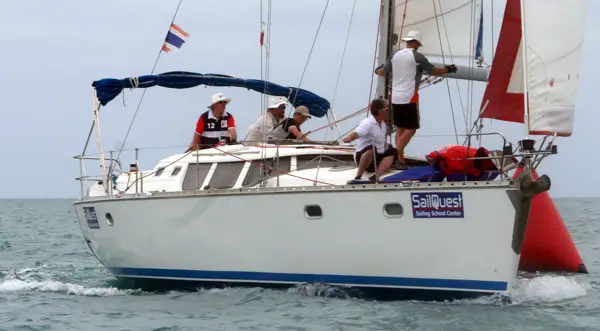Most of the emergencies that you might face while sailing can actually be avoided if the right precautions are taken. The most important thing while boating is to be fully prepared before going out. This will involve making sure that all the necessary equipment is on board. Safety equipment such as fire extinguishers and first aid kits should be readily available before going out. Here are some of the tips to avoid boat sailing emergencies.

Always wear a life jacket or a personal floatation device (PFD)
Properly worn life jackets will save your life and can prevent drowning. In most cases, most drowning victims were found without a life jacket or PFD. It is also highly recommended that you carry extra life jackets in all sizes. PFDs are a must for all kids below 13 years.
Take a course on boating
Taking a boating course is important in avoiding operator error. It is also a great idea for the whole family to get boating education. These courses will equip you with knowledge on safe operation procedures and navigation.
Learn about carbon monoxide (CO)
Carbon monoxide is an odorless gas that inhibits your body’s ability to assimilate oxygen. It is poisonous and takes only minutes to kill. It is emitted by internal combustion engines. Therefore, it is important to ensure sufficient ventilation and continuously monitor CO levels in the boat by using CO detectors. Proper maintenance of the engine is a must.
Avoid alcohol
The use of alcohol is attributed to about a third of all recreational boating accidents. It negatively affects coordination, judgment and vision. Boating under the influence is not only deadly, but it is also illegal. Alcohol use heightens impairment especially because of heat and sun exposure.
Get a vessel safety check
Checking for any faults or mechanical problems is important before going out on a boat. There is a free service provided by the U.S coast guard called the Vessel Safety Check (VSC). The check takes about 30 to 45 minutes and the aim is to check whether your vessel complies with all the federal and state boating laws. This check gives you the assurance that your boat meets the required standards. Your insurance costs may also be lowered. Also check out this great boat repair service app.
Operate your boat at a safe speed
Take into consideration safe operating speeds. Consider the present hazards or conditions and the safe speed that will allow you to stop the boat within a safe distance. If operating in crowded areas operate your boat at safe speeds. Safe operating speeds will give you full control of the boat
If operating a PWC (Personal Watercraft), ensure that you wear a US coast guard approved PFD. You should also take time to learn the rules involved and how to operate the vessel. Avoid overloading your vessel at all times as this will overwork your engine and may cause your boat to capsize. Be extra careful when operating in shallow waters. Avoid waters that are too shallow for the draft of your boat. You should also avoid waters that are swampy or full of obstacles in the form of tree stumps or rocks jutting out. Swampy areas or areas with seaweed can be dangerous especially if seaweed gets caught up in the propellers. Always check local weather conditions before departure. Listen in on forecasts for safe boating.
